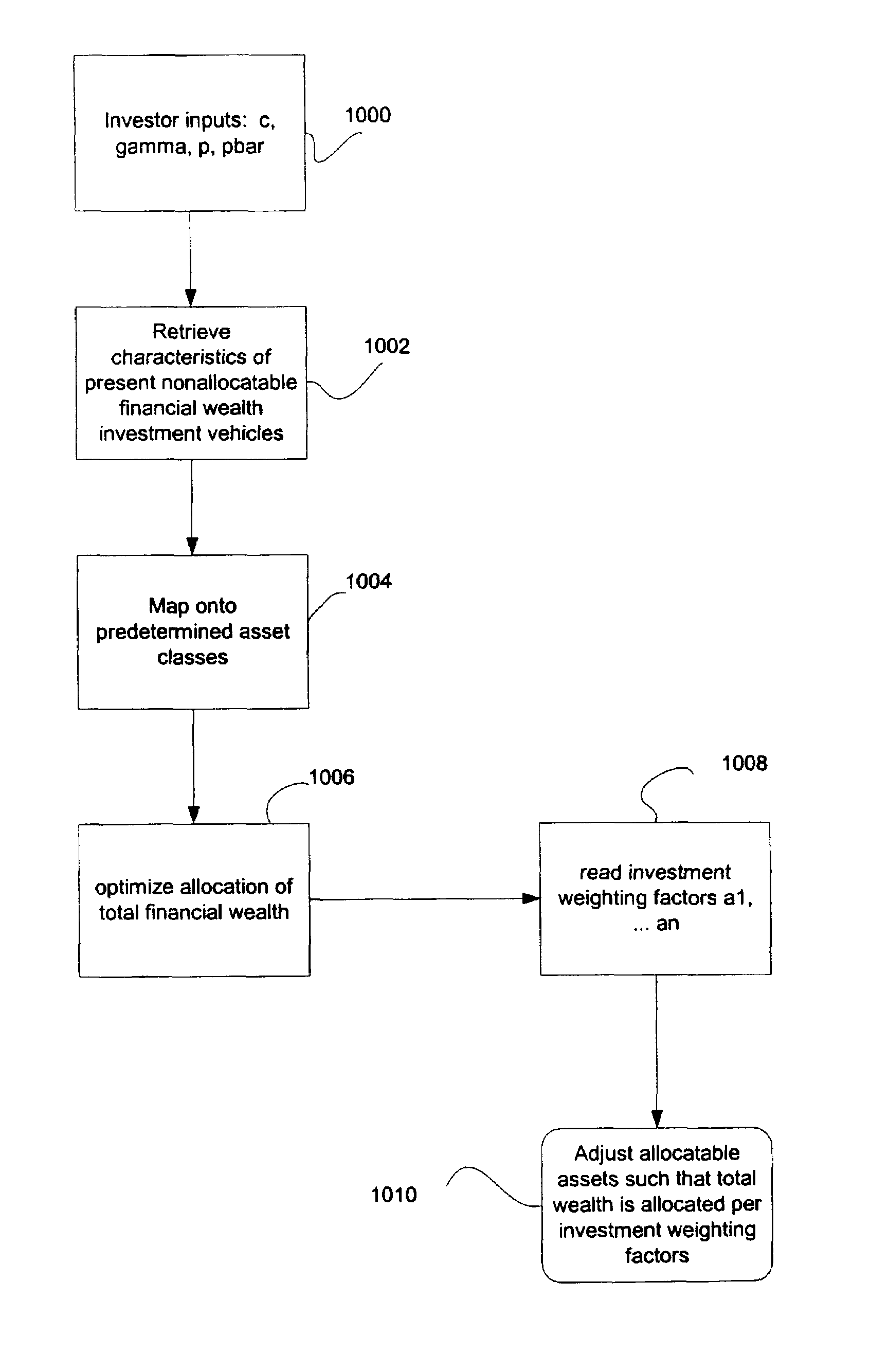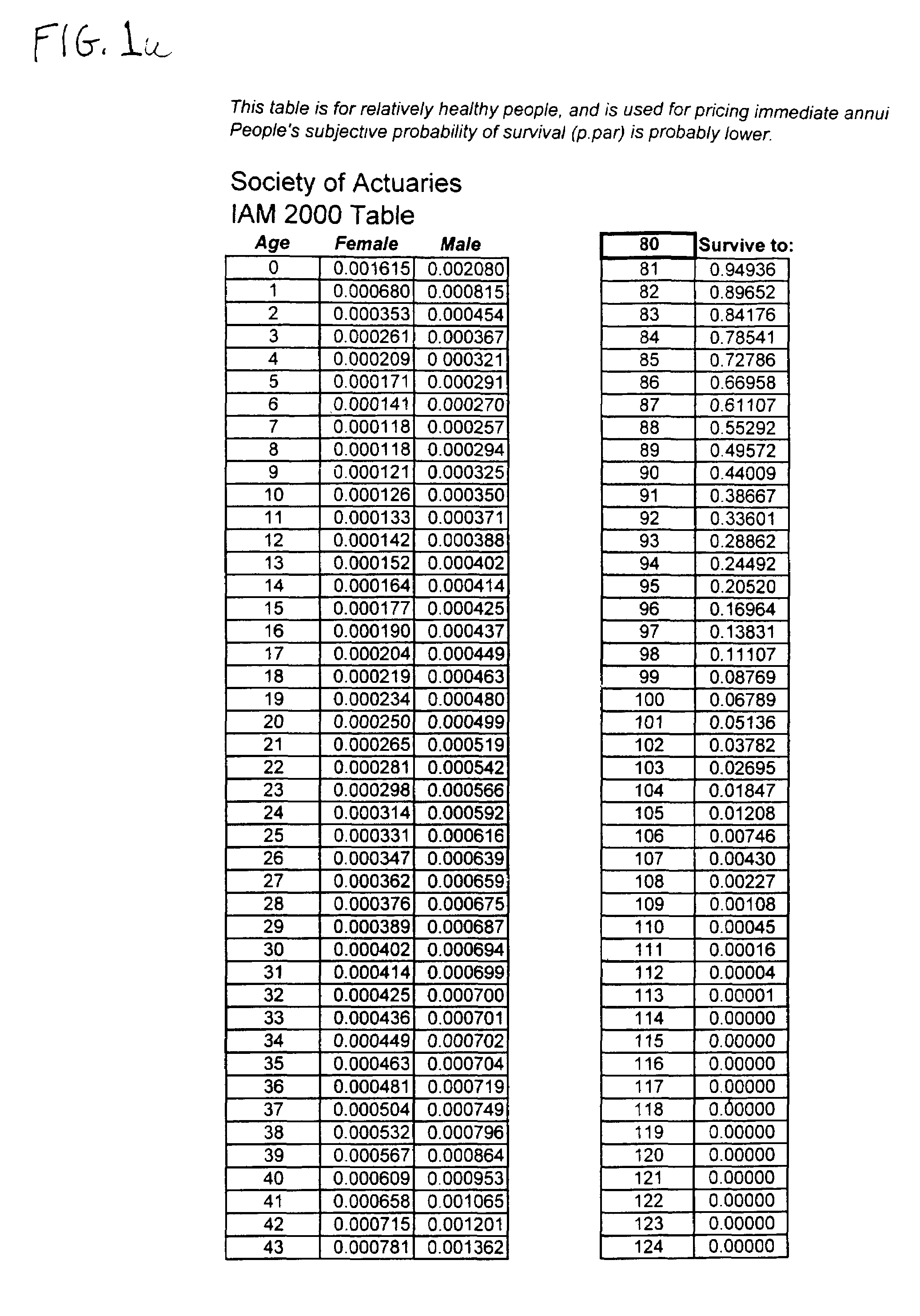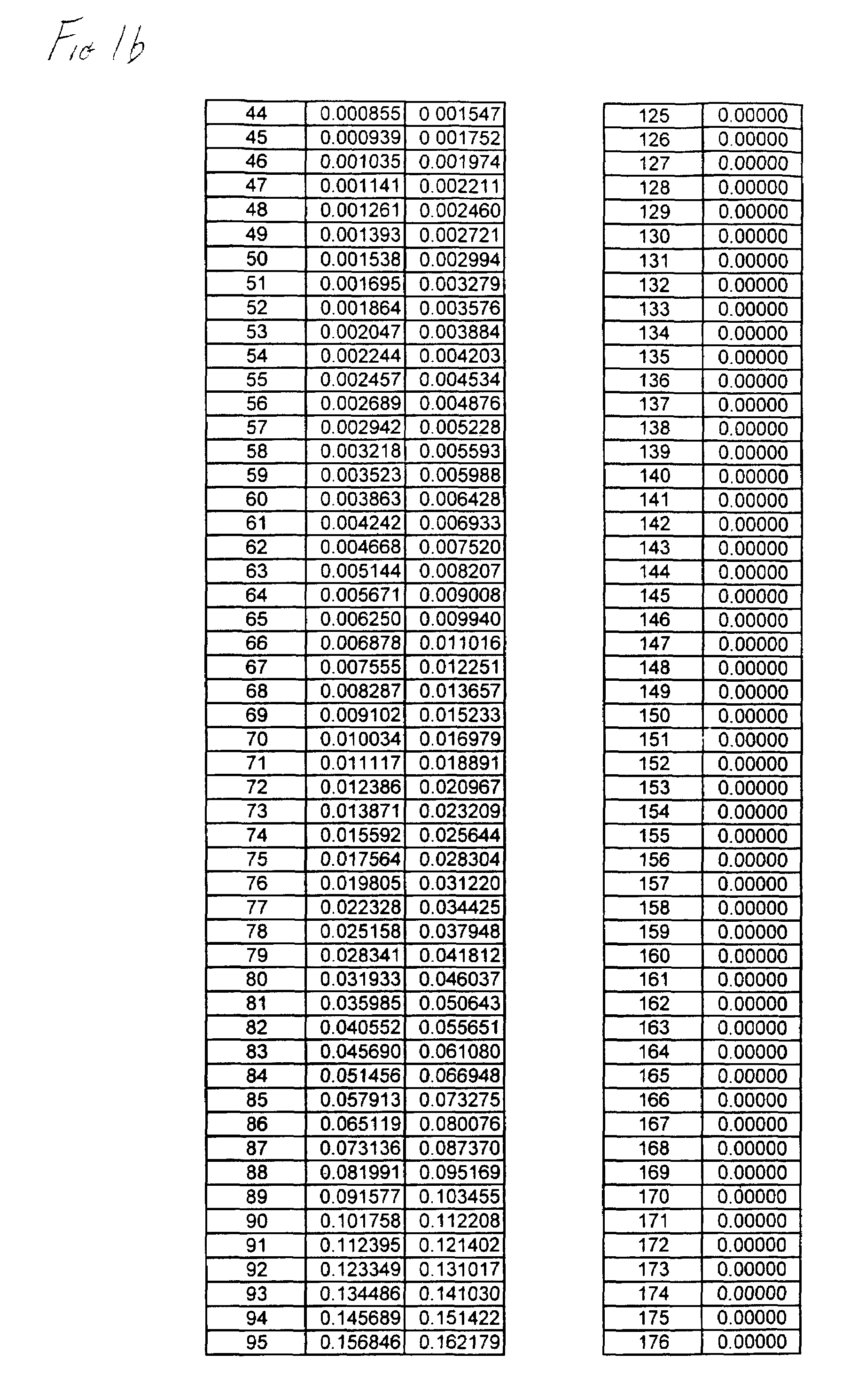Optimal asset allocation during retirement in the presence of fixed and variable immediate life annuities (payout annuities)
a technology of fixed and variable life annuities and optimal asset allocation, applied in the field of method and system for allocating retirement savings, can solve the problems of large gap that cannot be funded with discretionary savings, financial market risk and longevity risk, and financial market risk is the performance uncertainty of investment vehicles
- Summary
- Abstract
- Description
- Claims
- Application Information
AI Technical Summary
Benefits of technology
Problems solved by technology
Method used
Image
Examples
examples
[0191]To understand the predictions of the model of the present invention, let us look at four different cases so that we can see the effect of changing parameters on the optimal allocation. Each case uses the same capital market assumptions. For the sake of example assume that the return from the risk-free (T-bills) asset class is 5% per annum with no volatility. Likewise assume that the return from the risky asset is log-normally distributed with a mean value of 10% and a standard deviation of 20%. This implies a risk premium of 7%, which is in line with historical estimates. FIG. 1 is the Individual Annuity Mortality (IAM) 2000 basic table which lists the probabilities of survival for a relatively healthy population of potential annuitants. This table was compiled by the U.S.-based Society of Actuaries.
[0192]Many people might feel they are less (or more) healthy than the numbers indicated by the Individual Annuity Mortality 2000 basic table of FIG. 1; we will therefore assume tha...
case # 1
Case #1: Total Altruism and Complete Bequest Motives
[0194]In this case, we assume the investor's utility is derived entirely from bequest. In other words his utility of bequest is assumed to be one and his utility of consumption is zero, that is, A=0 and D=1. The objective probability of survival is 65% (roughly equal to the survival probability of a 60-year-old male in the next 20 years) and the subjective probability is the same 65%. Using these input parameters in the model described in Eqn. (1) above, the optimal allocations to the assets across various relative risk aversion levels are as presented in FIGS. 2A and 2B. More particularly, FIG. 2A is a chart showing the allocation among the four asset classes as a function of risk aversion, and FIG. 2B is a graph of the data presented in FIG. 2A.
[0195]As shown in FIGS. 2A and 2B, no assets are allocated to either the fixed immediate or the variable immediate annuities (FIA and VIA) since the investor only cares about bequest. Furt...
case # 2
Case #2: No Bequest Motives
[0196]This case maintains the same age (gender), survival probability and time horizon as the previous case, but simply reduces the strength of bequest from D=1 to D=0. In other words, 100% of the utility weight is placed on ‘live’ consumption. The optimal allocations to the assets across various risk aversion levels are presented in FIGS. 3A and 3B, in which FIG. 3A is a chart showing the allocation among the four asset classes as a function of risk-aversion, and FIG. 3B is a graph of the data presented in FIG. 3A.
[0197]As shown in FIGS. 3A and 3B, the immediate annuities get 100% of the allocation because the returns on annuities are always higher than the returns on traditional assets (p<1). The allocation to immediate variable annuity gradually decreases, while the allocation to immediate fixed annuity increases as the risk aversion of the investor increases. This case can be used as an illustration for investors who would like to maximize their lifeti...
PUM
 Login to View More
Login to View More Abstract
Description
Claims
Application Information
 Login to View More
Login to View More - R&D
- Intellectual Property
- Life Sciences
- Materials
- Tech Scout
- Unparalleled Data Quality
- Higher Quality Content
- 60% Fewer Hallucinations
Browse by: Latest US Patents, China's latest patents, Technical Efficacy Thesaurus, Application Domain, Technology Topic, Popular Technical Reports.
© 2025 PatSnap. All rights reserved.Legal|Privacy policy|Modern Slavery Act Transparency Statement|Sitemap|About US| Contact US: help@patsnap.com



